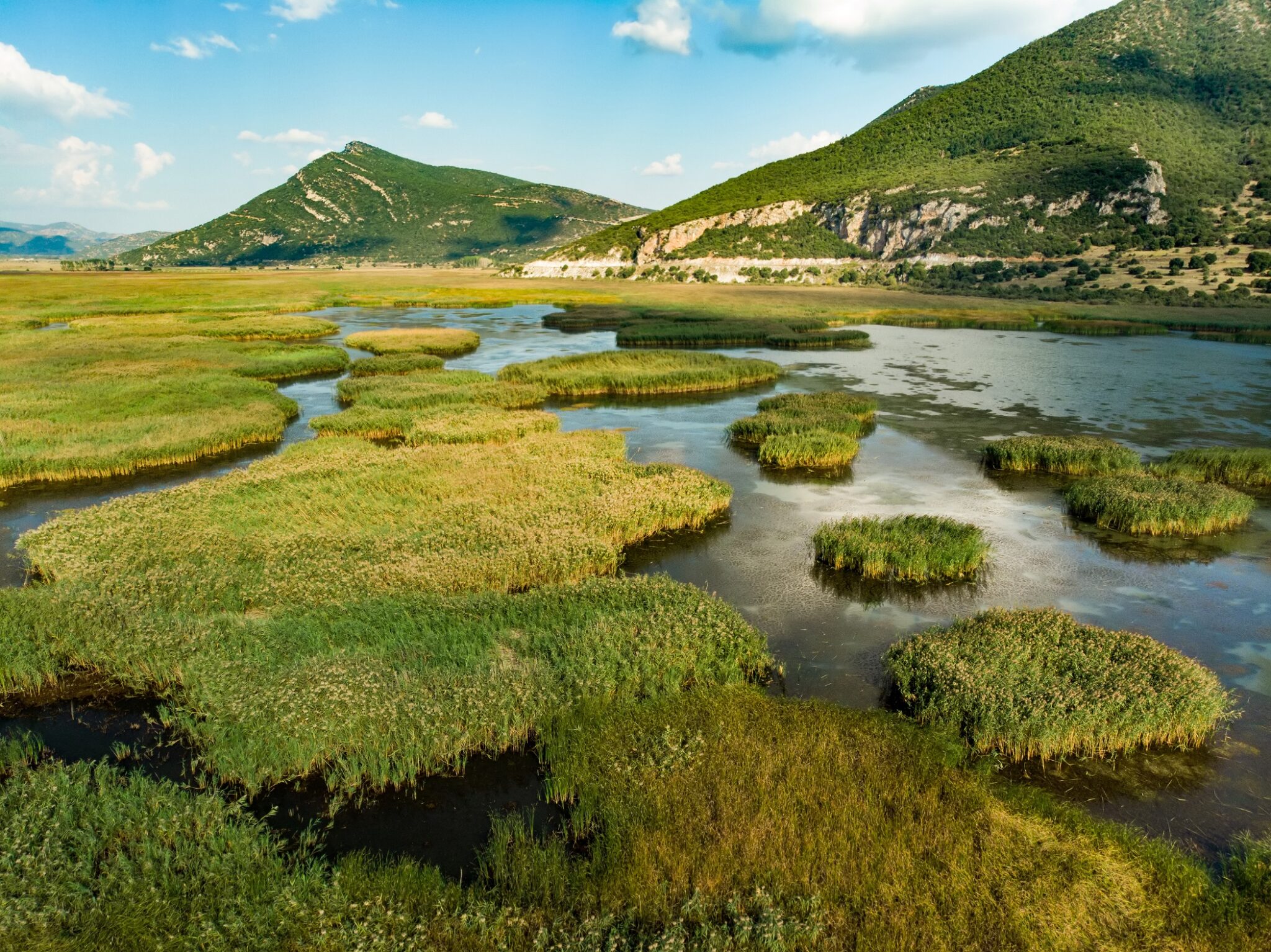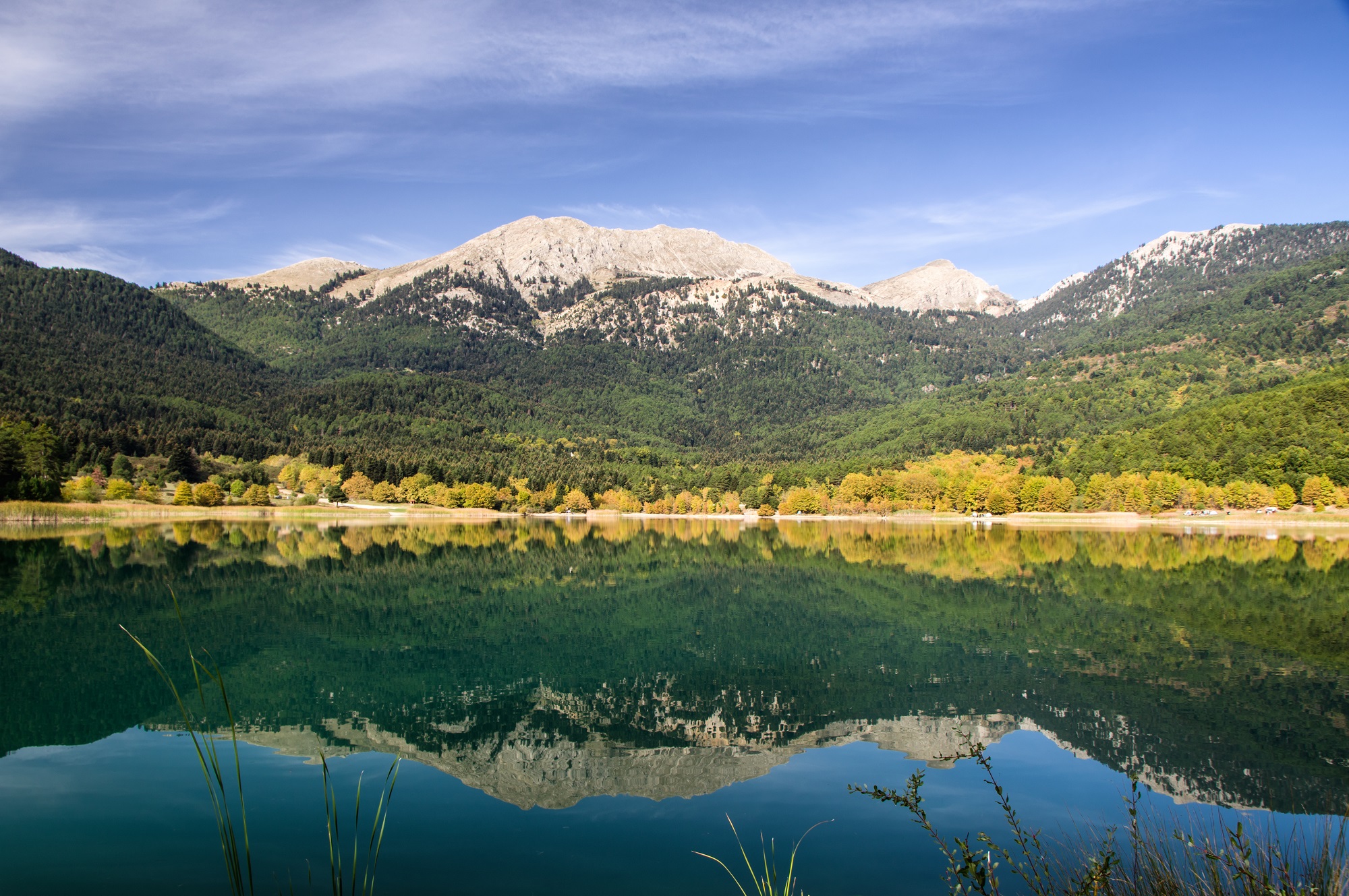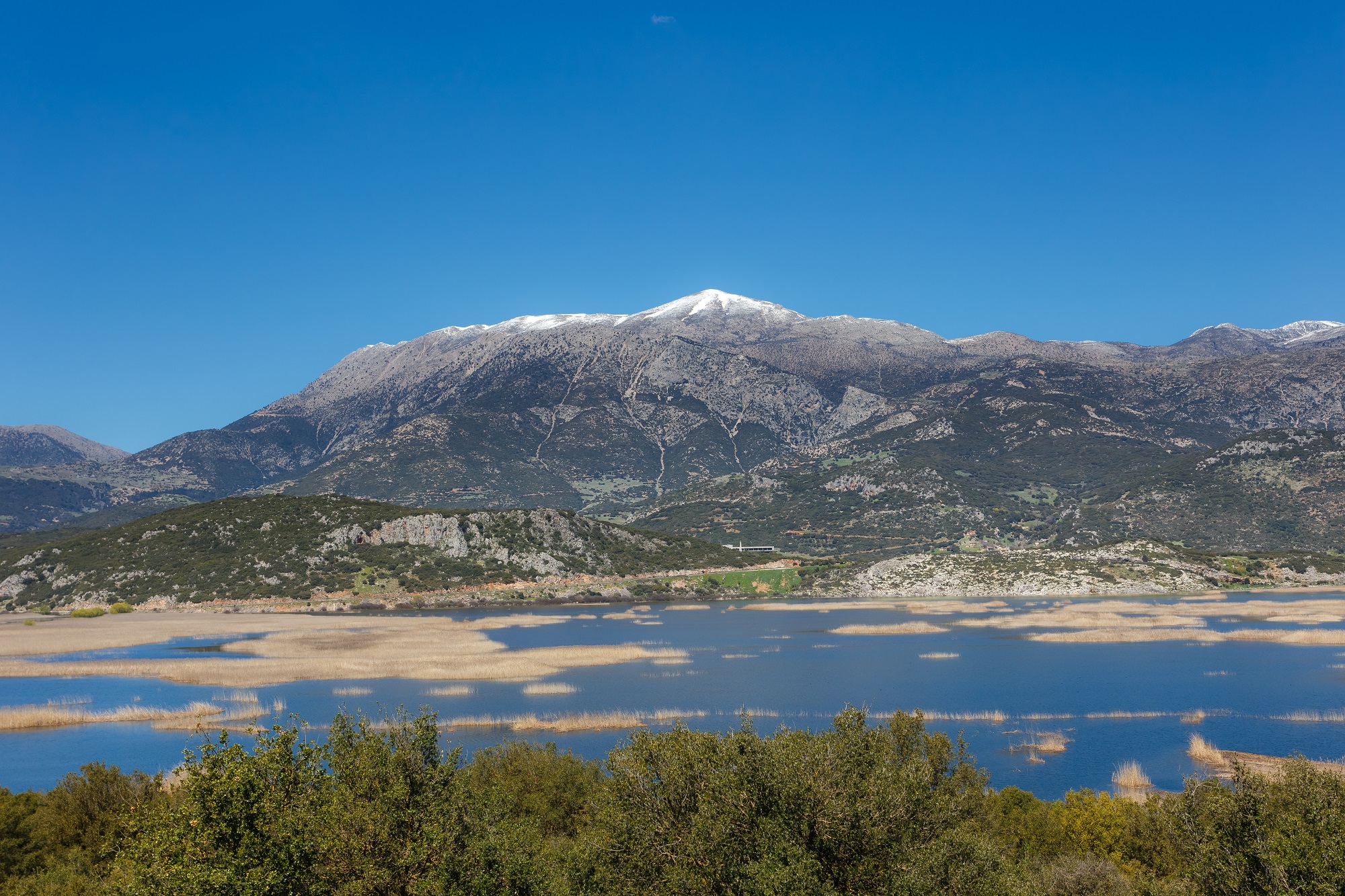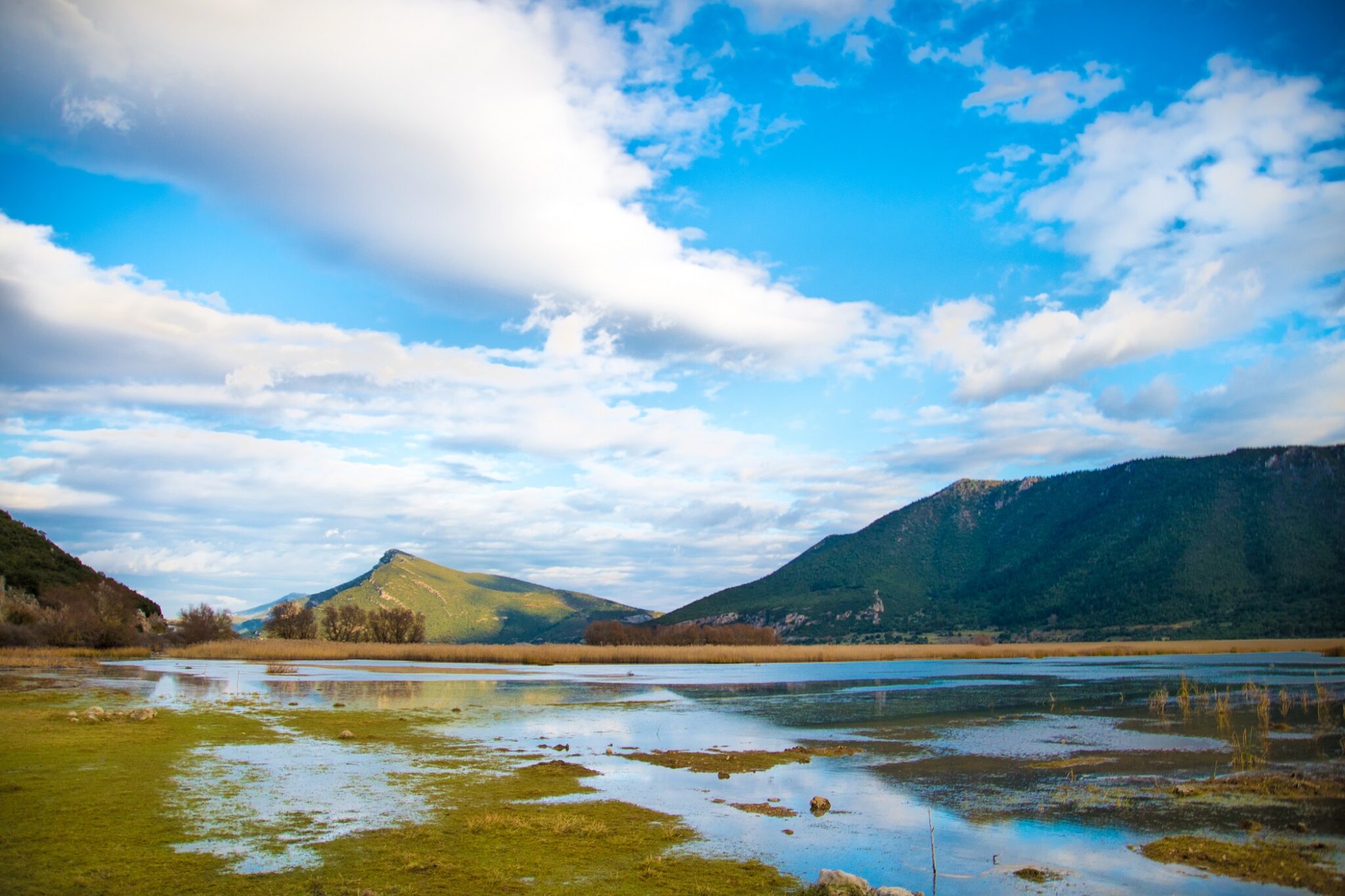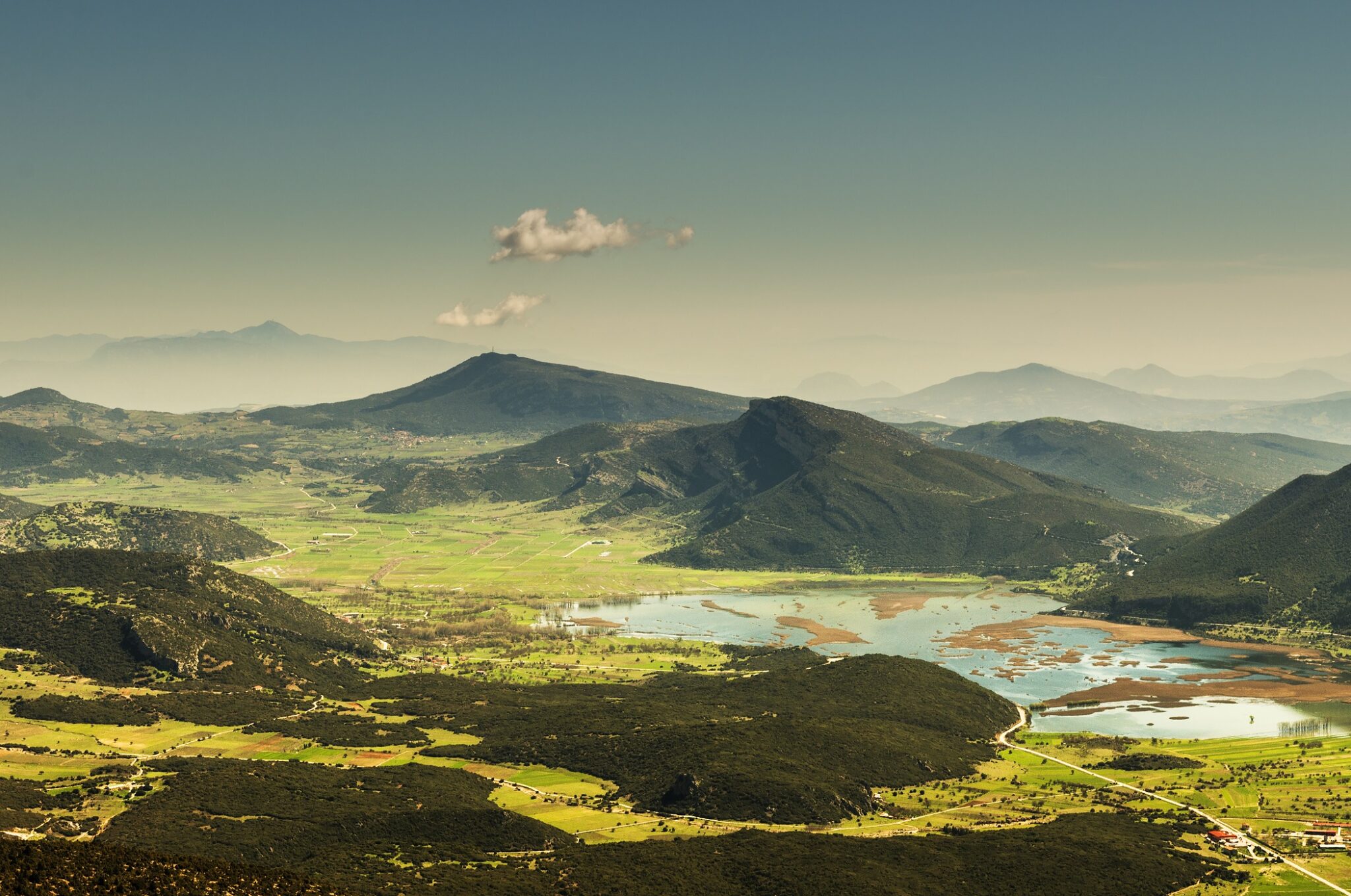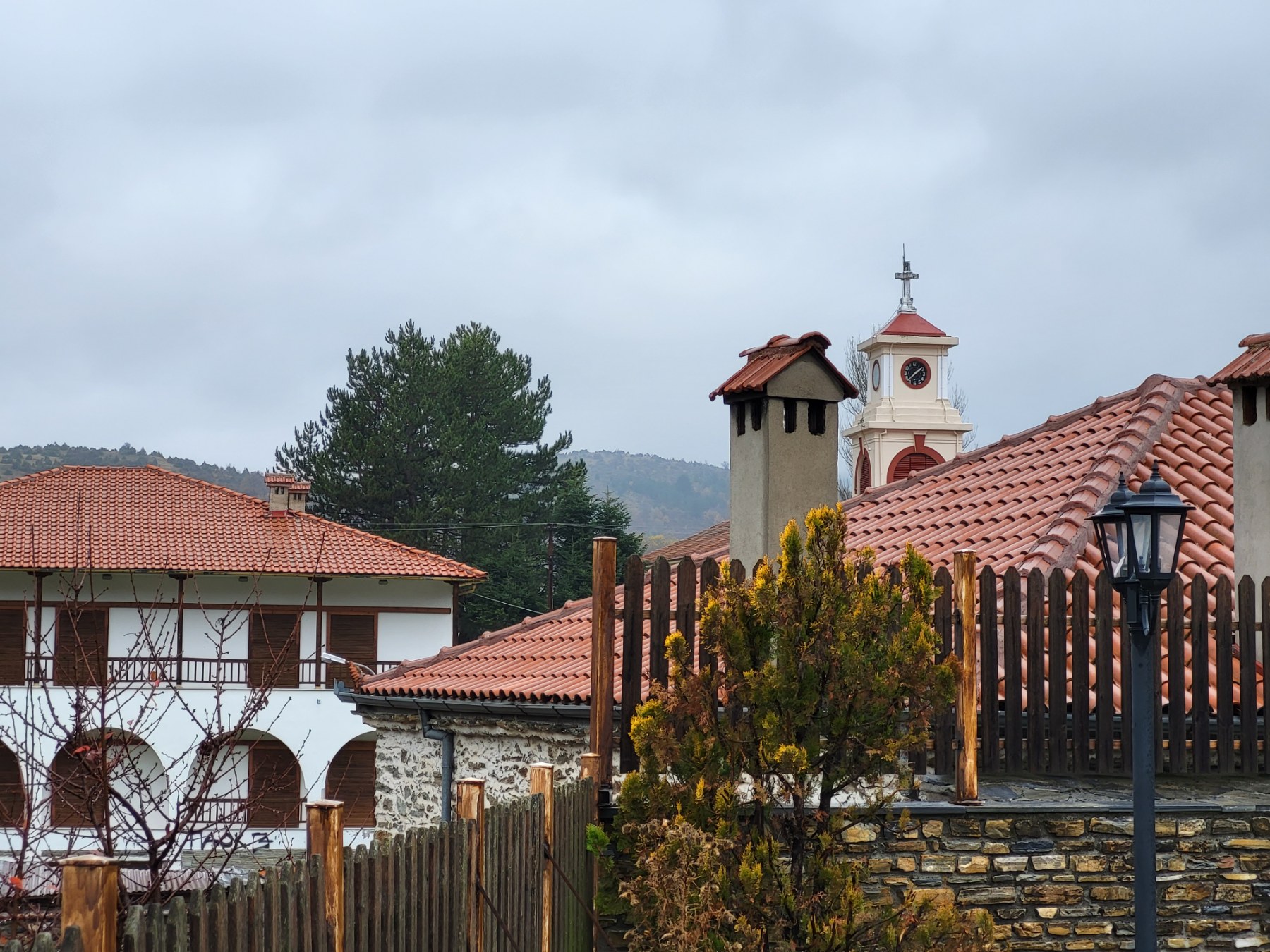Though Lake Stymfalia is best known through ancient Greek mythology as one of the locations linked to the Labours of Hercules, its modern-day significance, as the southernmost mountain wetland in the Balkans, remains largely unknown.
According to ancient Greek mythology, Hercules reached the lake in the mountainous Corinthia region to perform the sixth of his twelve labours, for which he encountered the Stymphalian birds, man-eating birds with copper beaks, claws and wings, hidden amid the dense lakeside vegetation, to the terror of locals and their herds. Hercules, with precious help from the goddess Athena, prevailed in his battle with the Stymphalian birds, but did not manage to exterminate the entire lot with his arrows as some birds escaped to the island Aretias, Turkey’s modern-day Giresun, in the Black Sea.
This legend may have been shaped by the historical existence of the northern bald ibis (Geronticus Eremita) in the region, a bird species no longer found in Greece but which appears to have existed in Greek territory until the 2nd millennium BC.
The legendary tale is not entirely detached from modern-day reality as the lake continues to host unique animal species, making it an important wetland. The lake, classified as a protected area, has been incorporated into the Natura 2000 network. An area covering 12.83 km2 is included in this listing.
The name Stymfalia is derived from the city Stymphelos of the ancient Arcadians, which, besides the Stymphalian birds, was also considered a place where the goddess Hera was raised. The deity was highly honoured by locals.
The ancient city may be visited. Excavation work has revealed its agora, or central public space, as well as the remains of Roman-era buildings. The modern-day village Stymfalia, in this area, has a population of 184, according to a census conducted in 2011.
Lake Stymfalia and the seasons of the year
Lake Stymfalia is situated at an imposing plateau, 620 metres above sea level, between Mount Kyllini, or Ziria, as well as the mountains Olygirtos, Megalovouni, Gavrias and Veseza. Mount Kyllini dominates the view from Lake Stymfalia. The lake’s maximum size, when its water level is highest, covers 3.5 km2.
The shape and depth of the lake varies greatly depending on the season. Fluctuating amounts of rainfall flow to streams and rivers that feed the lake, along with surrounding springs. Lake Stymfalia contains lots of water during the winter, its depth usually reaching 2 to 2.5 metres, though depths of as much as 4 metres have occasionally been recorded. Water levels recede considerably in summer and autumn, revealing areas with reeds and short vegetation. During these seasons, lake areas where water remains do not exceed depths of half a metre. Even in such a depleted state, the lake offers abundant natural beauty.
Reasons for which Lake Stymfalia has been incorporated into the Natura 2000 network of protected areas include its use as a resting and breeding ground by numerous migratory birds, including the ferruginous duck, a rare species. Other species that may be found here include glossy ibis, herons, woodcocks, little ringed plovers, blue rock thrushes, common buzzards, short-toed snake eagles and Eurasian blue tits. Special mention must also be given to the Pelasgus stymphalicus, a species of small freshwater fish also known as dáska or stymphalia minnow, found only at the lake and a few other rivers in the Peloponnese. This fish species stands out for its ability to survive periods of drought, feeding off thick layers of mud created during such conditions.
Besides the lake, itself, it is also worth visiting the Environment Museum, on the slope of one of the nearby hills. The museum represents a great way to learn more about the area’s flora and fauna, local history, as well as how the specific environment influenced human activities over the years.
Directions
Lake Stymfalia can be included as part of a visit to the wider mountainous Corinthian region. The area is just over a one-and-a-half-hour drive from Athens, assuming traffic conditions are normal.
Stymfalia is in the southwestern section of the Corinthian region, close to the border with Argolida, approximately 60 km from Corinth and 35 km from Kiato. Taking the Athens-Patras highway, turn off at the intersection for Kiato and head in this town’s direction. The road develops into an uphill stretch roughly 8 km away. Then, during the approach to the village Stymfalia and Lake Stymfalia, you may choose between an eastern or western route, as well as a full route covering the entire lake. All three options guarantee an idyllic natural setting.
Read also:
Lake Kournas: Cretan freshwater lake with white sandy shores
Stavros: Cretan double beach with turquoise waters, old Venetian quarry



